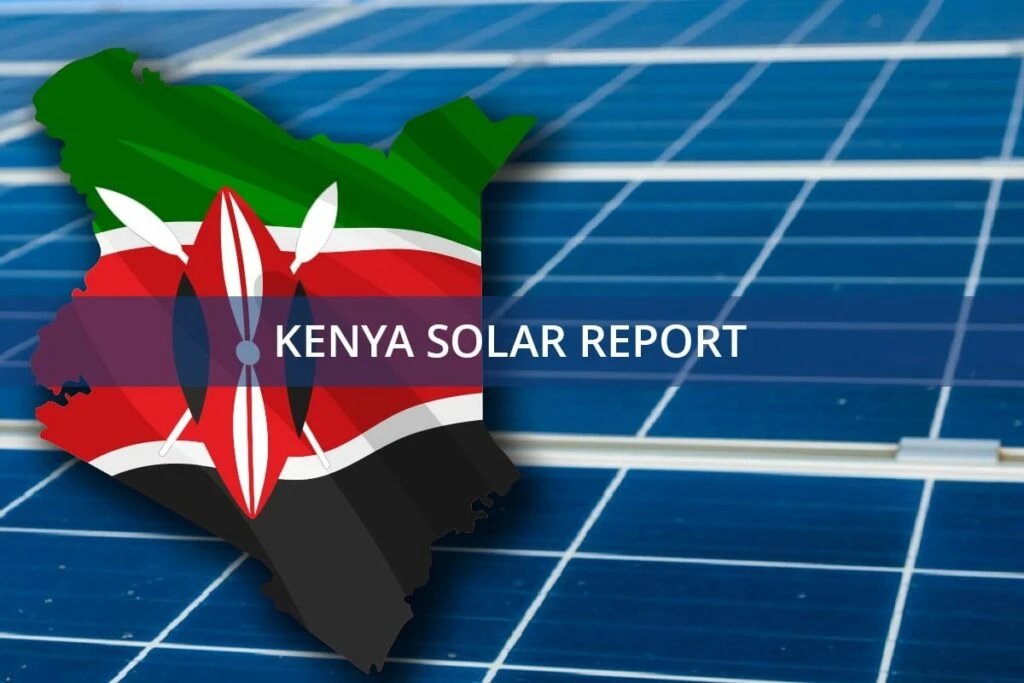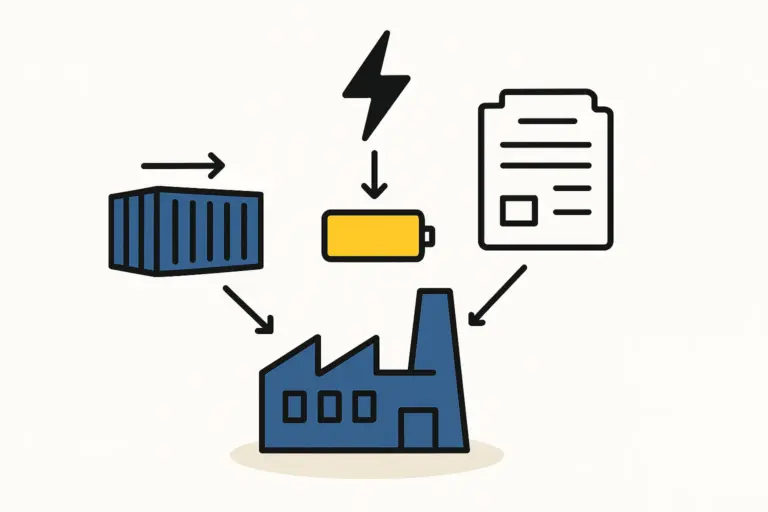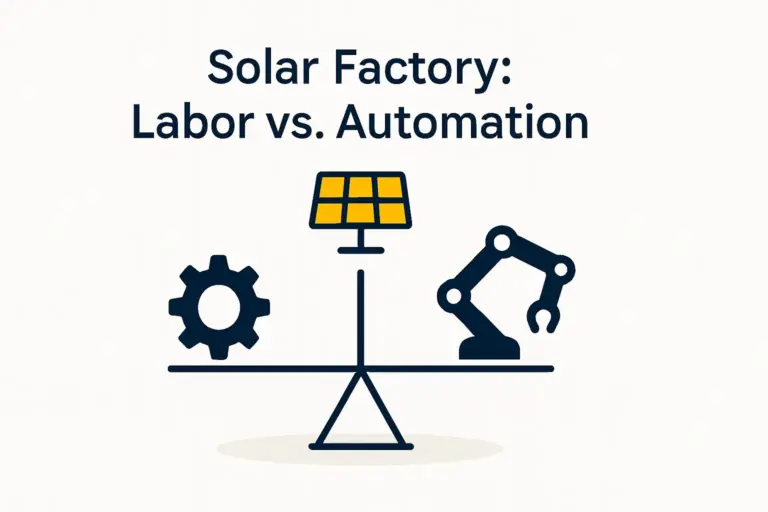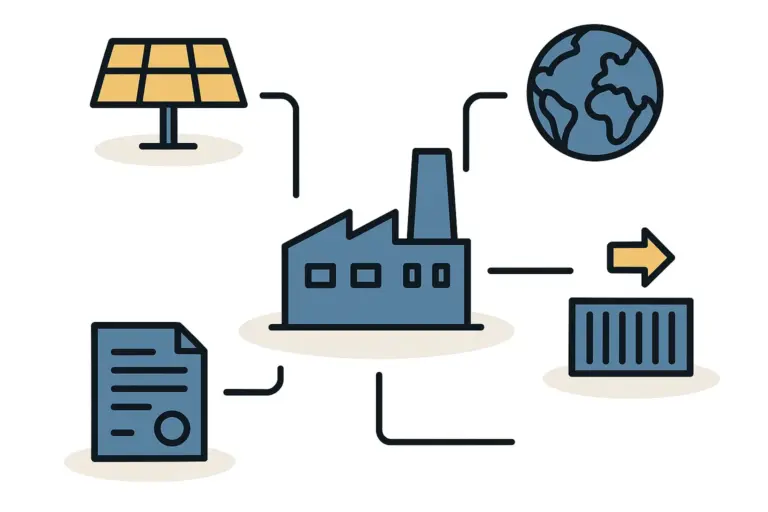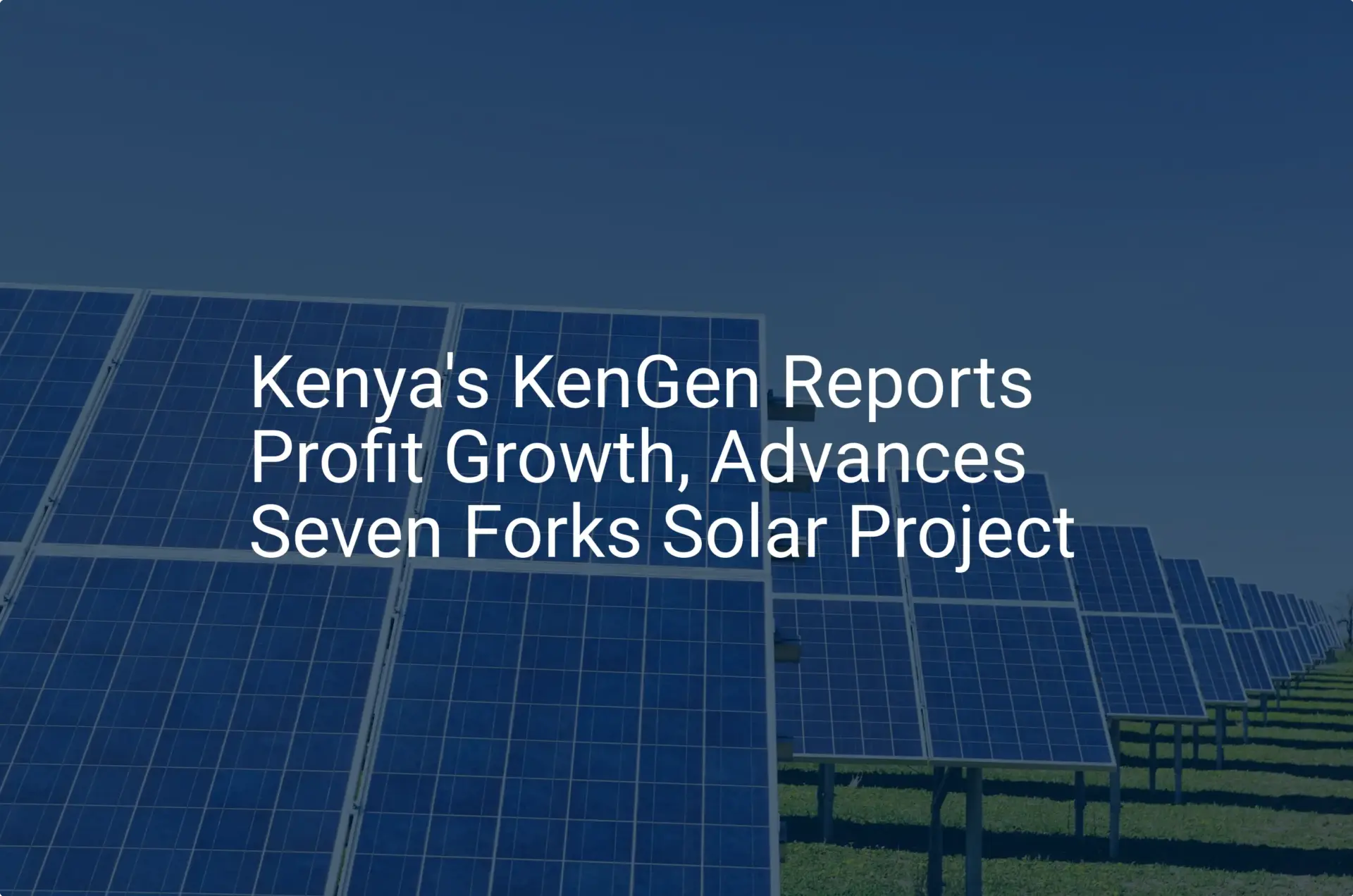For an entrepreneur, Kenya’s abundant sun is more than just light; it’s a powerful business opportunity. The government’s ambitious renewable energy goals, outlined in its Vision 2030 plan, are paving a golden path for local solar panel production.
But between that vision and a fully operational factory lies a complex terrain of regulations and standards. Navigating this landscape is the first real test for any serious manufacturing venture.
This article maps out the key regulatory requirements for establishing a solar module factory in Kenya, offering a guide for professionals who see the opportunity and need a clear plan for the administrative journey ahead.
The Foundation: National Policies Driving Solar Growth
Before diving into specific permits, it’s essential to understand the supportive framework the Kenyan government has built. These national strategies create a favorable environment for investment in the solar sector.
Kenya’s commitment to renewable energy is more than a statement; it’s embedded in high-level policy documents like the National Climate Change Action Plan, which creates stable, predictable demand for clean energy solutions. The “Buy Kenya, Build Kenya” initiative also encourages local production, offering a distinct advantage to manufacturers based in the country.
For investors, this signals that the government is not just a regulator but a potential major client and advocate. These tailwinds confirm that a solar manufacturing venture in Kenya is built on a solid political and economic foundation.
Core Regulatory Agencies: A Guide for Manufacturers
While the policy environment is welcoming, getting a factory up and running requires engaging with several key government bodies. Understanding their distinct roles is essential to avoid costly delays.
The Energy & Petroleum Regulatory Authority (EPRA)
EPRA is the primary regulator for Kenya’s entire energy and petroleum sector. For a solar panel manufacturer, its most relevant function is overseeing licensing and setting the standards for electricity generation, transmission, and distribution.
While a module factory itself doesn’t typically require an EPRA license to operate, understanding its framework is critical for two key reasons:
-
Market Integration: Your future clients—from large-scale solar farms to commercial rooftop installers—operate under EPRA’s regulations. Understanding their compliance needs will help you align your products and support services accordingly.
-
Potential for Expansion: If your business plans to install its own large-scale solar plant (beyond simple self-consumption) or sell excess power to the grid, you will fall directly under EPRA’s licensing and certification requirements.
The Kenya Bureau of Standards (KEBS)
Quality is non-negotiable in the solar industry. As the national body responsible for standards, the Kenya Bureau of Standards (KEBS) ensures products sold in the market meet specific quality, safety, and performance criteria. For a solar panel manufacturer, KEBS certification is a critical checkpoint that directly impacts market access and brand reputation.
A manufacturer must be prepared to meet several primary standards:
-
KS IEC 61215: This standard specifies the design qualification and type approval for crystalline silicon terrestrial photovoltaic (PV) modules. It involves rigorous testing—for thermal cycling, humidity, UV exposure, and mechanical load—to ensure panels can withstand long-term outdoor operation.
-
KS IEC 61730: This standard covers PV module safety qualification, focusing on preventing electrical shock, fire hazards, and personal injury.
Achieving KEBS certification is more than a legal requirement; it’s a powerful signal of quality. It demonstrates that your products are reliable, safe, and built for the local climate, building the trust needed to compete with established international brands.
The National Environment Management Authority (NEMA)
Every industrial project in Kenya must account for its environmental impact through a process managed by NEMA. Before construction on a solar panel factory can begin, an entrepreneur must undertake a comprehensive Environmental Impact Assessment (EIA).
The EIA process involves:
-
Hiring a licensed EIA expert to study the potential environmental and social impacts of the factory.
-
Analyzing factors like water usage, waste management (including chemical handling and disposal), air quality, and noise levels.
-
Developing a detailed Environmental Management Plan (EMP) to mitigate any negative impacts.
-
Submitting the EIA report to NEMA for review and public consultation before an EIA license is granted.
Experience from turnkey projects shows that entrepreneurs new to industrial development often underestimate the time and detail required for a successful NEMA submission. Treating this process as a core part of the business strategy, rather than a final hurdle, is key to a smooth project timeline.
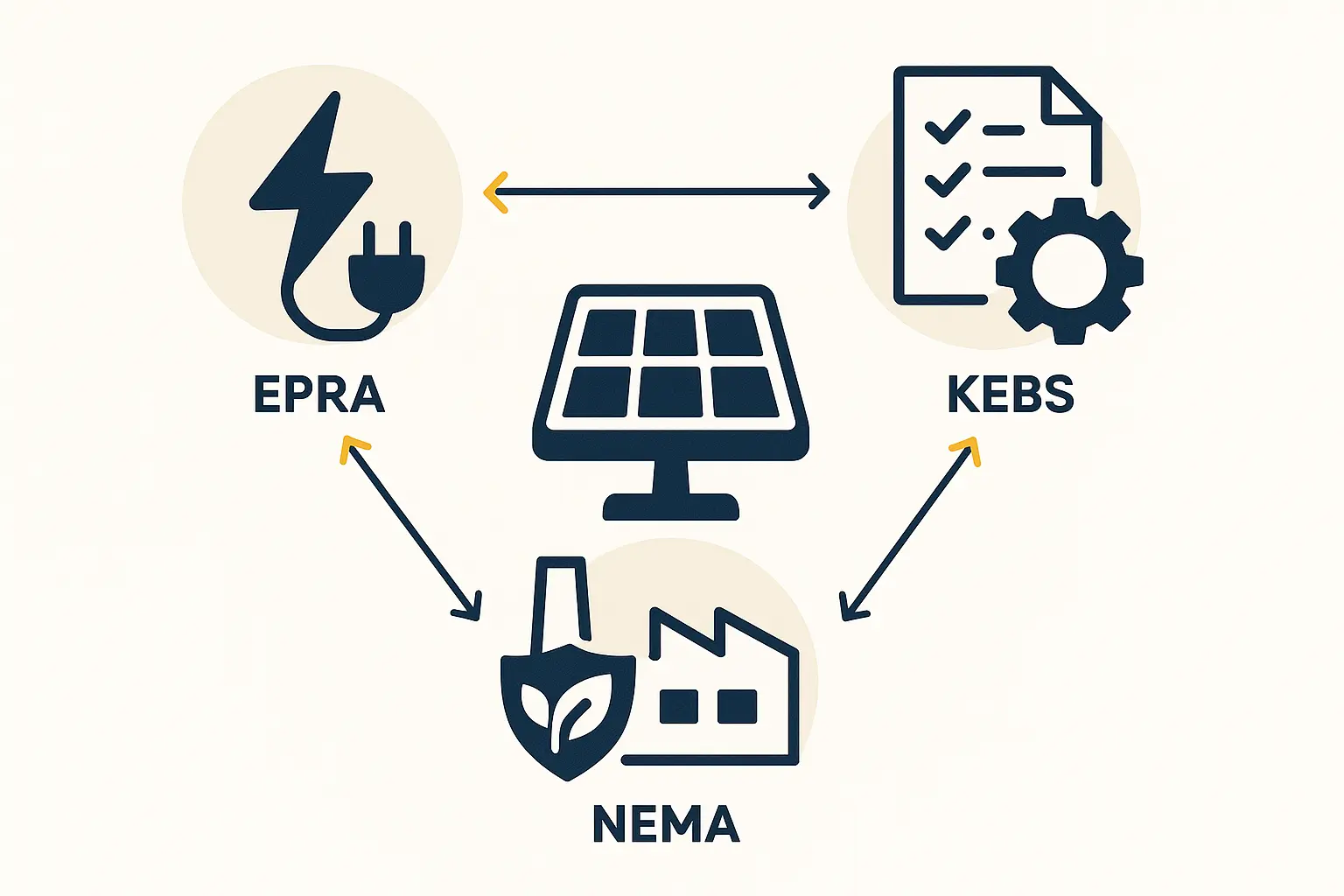
The Blueprint for Your Factory: From Registration to Operation
With the key agencies in mind, the path to opening a factory involves several practical, sequential steps.
Business Registration and Financial Incentives
The first formal step is registering the business entity with the Business Registration Service (BRS). Next, it is crucial to understand the available financial incentives. The Kenyan government offers significant benefits to encourage investment in renewable energy, including:
-
VAT Exemption: Key renewable energy equipment, including manufacturing machinery, is often exempt from the 16% Value Added Tax.
-
Import Duty Exemption: Capital goods and raw materials for solar panel production may be exempt from import duties.
Properly documenting and applying for these exemptions during procurement can significantly reduce the initial investment.
Securing Your Site: Land Use and County Permits
Once a site is identified, compliance shifts to the county level. The specific county government where the factory will be located will have its own set of requirements for:
-
Land Use and Zoning: Ensuring the land is zoned for industrial use.
-
Construction Permits: Approving the architectural and structural plans for the factory building.
These local permits are required in addition to national-level approvals from bodies like NEMA. Integrating these various requirements into a cohesive project plan is essential. A structured turnkey planning process helps ensure the factory layout is designed from day one to meet regulatory standards for safety, waste handling, and workflow.

Frequently Asked Questions (FAQ)
What is the most common compliance mistake new solar manufacturers make in Kenya?
A frequent oversight is underestimating the timelines and interdependencies of the regulatory processes, especially the EIA from NEMA and product certification from KEBS. Many entrepreneurs assume these are quick final steps, when they should be initiated early in the project planning phase.
Do I need all these permits before I can order manufacturing equipment?
You do not need all permits in hand to order equipment. However, a comprehensive business plan that accounts for the full scope of regulatory requirements is essential before committing to major capital expenditures. A well-structured plan ensures your procurement strategy aligns with your compliance timeline.
How long does the entire regulatory approval process typically take?
While it varies by project complexity, a realistic timeline to secure all major national and county-level approvals is between six and 12 months. Starting the process with complete and professional documentation can significantly shorten this period.
Are the regulations for solar manufacturing the same across all counties in Kenya?
While national regulations from EPRA, KEBS, and NEMA are uniform, there can be minor variations in the processes and fees for construction and land use permits at the county level. It’s important to engage with the relevant county government’s planning office early in the site selection process.

The Path Forward
Entering Kenya’s solar manufacturing sector offers immense potential for growth and impact. The country’s regulatory framework, while detailed, is not a barrier but a structured pathway designed to ensure that new entrants build high-quality, safe, and sustainable operations.
By understanding the roles of key agencies and approaching compliance strategically, an entrepreneur can transform regulatory hurdles into a competitive advantage. This builds a brand known for quality and integrity from day one. While you don’t need to be an expert in Kenyan administrative law to succeed, you do need a clear plan and reliable guidance to navigate the journey confidently.

